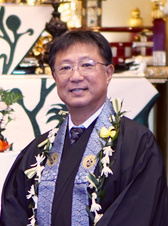On May 17, 1868, a pioneering group of Japanese migrants embarked on a challenging journey aboard the Scioto from Yokohama to Honolulu, Hawaii. Comprising 149 individuals, including 141 men, six women, and two children, they were known as gannenmono, or “first-year people,” arriving during the inaugural year of Japan’s Meiji era. This group faced a lengthy and arduous voyage, during which six births occurred. Upon reaching Hawaii, they assumed roles as laborers on sugar plantations, confronting formidable challenges that included demanding physical labor and pervasive discrimination. This early chapter in Japanese immigration laid the groundwork for subsequent struggles and the eventual establishment of Buddhist services in Hawaii.
In the face of such adversity, the immigrants sought support from the Japanese government, particularly through the consulate in Honolulu. Among their requests was the establishment of their own religious services at the plantations. While some Buddhist and Christian leaders had conducted death rites for the immigrants, it became evident that many longed for Buddhist ministers to guide them through their hardships. Plantation leaders, especially in the Honolulu and Oahu regions, petitioned the Consulate General of Japan to allow the presence of Buddhist ministers and spiritual services to alleviate the struggles of the immigrant community.
Responding to this appeal, the Government of Japan turned to Hongwanji, specifically Nishi Hongwanji’s Mother Temple, for assistance. Most of the immigrants belonged to the associated Nishi Hongwanji (Jodo Shinshu Hongwanji-Ha) sect. After careful deliberation by the Nishi Hongwanji cabinet and Abbot, it was decided to dispatch Reverend Soryu Kagahi to Hawaii to assess the importance of sending a minister to support the immigrants
On March 1, 1889, Reverend Soryu Kagahi arrived in the Kingdom of Hawaii and conducted the first official Hongwanji service in his modest room at the Kojima Hotel in Honolulu on March 3, 1889. The milestone continued with the inaugural memorial service for Shinran Shonin held on the evening of March 15, 1889, at Emma Street in Honolulu, marking the establishment of the first official Hongwanji building in Hawaii. During these services, the familiar sounds of “Okyo – Shoshin-ge” resonated, evoking deep emotions among the leaders who fondly remembered their homeland in Japan.
Recognizing the crucial need for spiritual support in the daily lives of Hawaiian immigrants, Rev. Kagahi reported to the Mother Temple in Kyoto, Japan, advocating for the continued presence of Hongwanji ministers in Hawaii to offer Amida Buddha’s spiritual guidance.
Over the course of 135 years since the introduction of the Nembutsu in the Kingdom of Hawaii, the Buddhist community has flourished. At its peak, there were more than 35 temples and satellite locations (Fukyo-jo) throughout the state. Presently, despite the closure of plantations and other factors, we maintain 28 temples, a Hongwanji Mission school, a Pacific Buddhist Academy (high school), and a Buddhist Study Center. These institutions stand as beacons, offering a space for all, including the younger generation, to receive Amida Buddha’s infinite wisdom and compassion through the practice of the Nembutsu.
As we celebrate Hongwanji Day, let us collectively express our joy and happiness as a Hongwanji sangha. This occasion serves as a poignant reminder that we are entrusted with the profound guidance of the Nembutsu, a treasure meant to be shared with our Ohana


